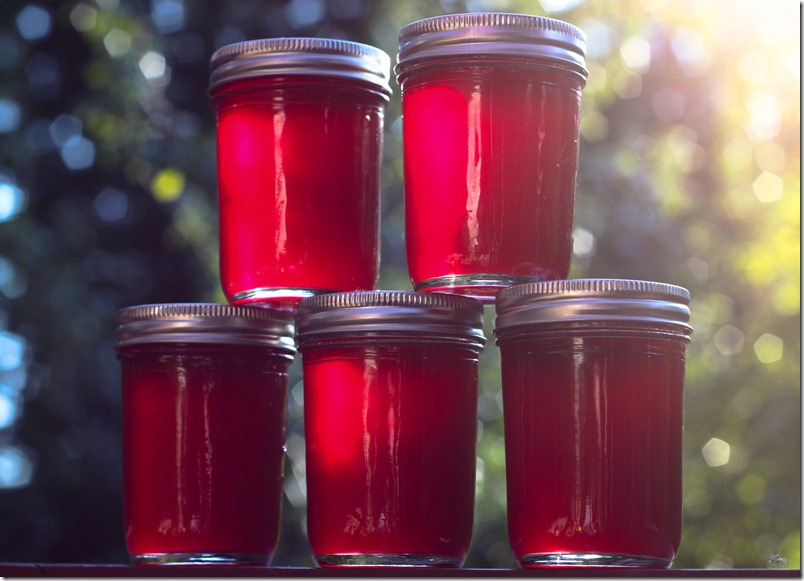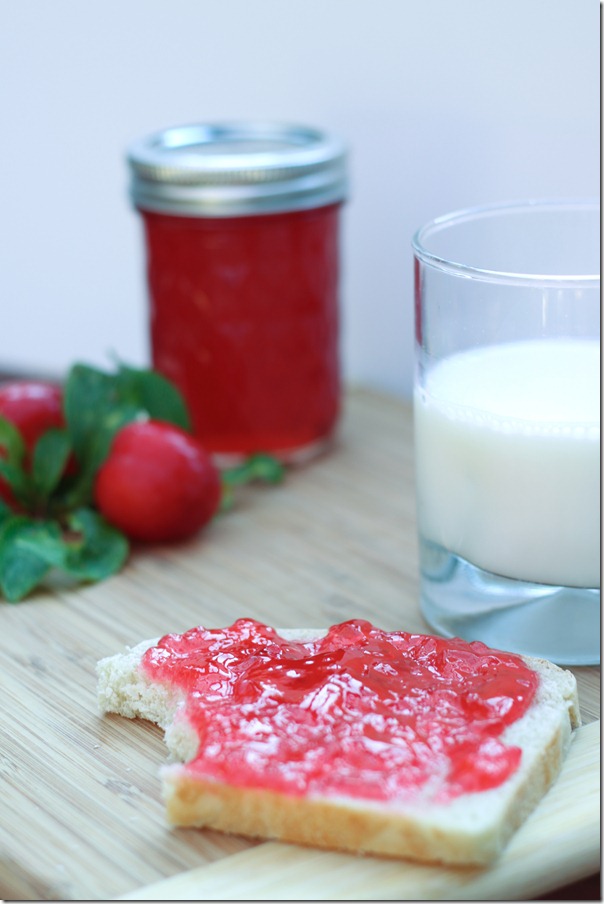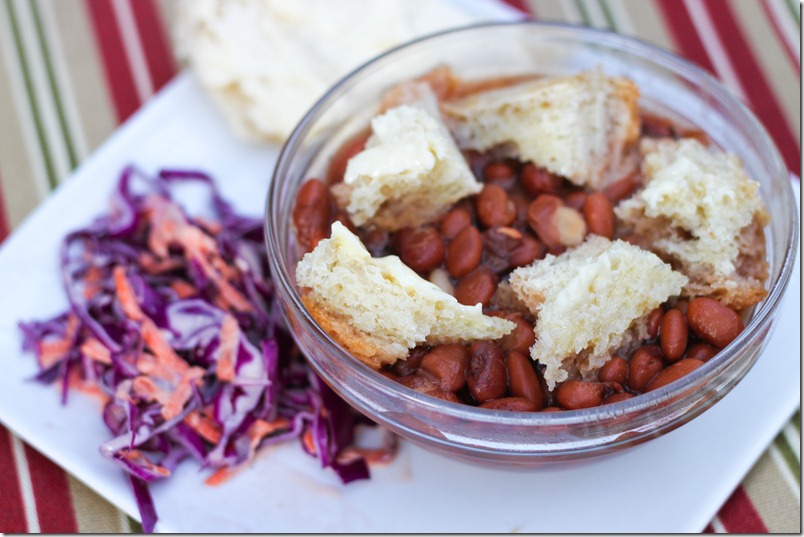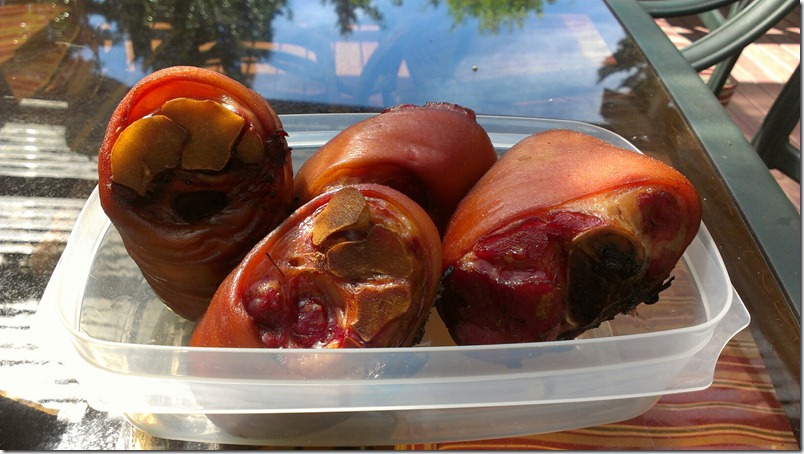I love fresh sweet plums from my backyard tree. It produces such juicy plums, they are best eaten leaning over the kitchen sink or out in the yard. This year, the tree was so overloaded with fruit that even giving them away to friends and neighbors didn’t dent the crop so I had to find other uses for them. They are juicy and delightful but don’t keep very long in the fridge. I find that jelly is one of the nicer uses for sweet plums since different plum varieties have different ratios of juice, making this recipe work well, regardless of the variety.
Sweet Red Plum Jelly
8 – 1 cup jelly jars, canning lids, and rings
5 1/2 cups – Fresh plum juice, about 5 lbs of plums (see instructions below)
1 box – pectin
6 cups – sugar
1/4 cup – lemon juice (optional)
To extract the plum juice, pit plums (even though it will be strained, removing pits makes it easier to squeeze later) lightly chop, and place in a medium sauce pan. If your plums are firmer, add a little water. Simmer fruit until very soft (5 to 20 minutes, depending on the fruit). Let cool slightly and strain through several layers of cheese cloth or a jelly juicing bag.
Fill a large heavy canner or pot about half full (enough to cover the jars with 1-2 inches of water) and heat to a simmer. Remember that the jars take up space in the pot as you don’t want the pot to overflow when you start to process them.
Prepare the jars, lids, and rings by washing then dipping for several minutes in boiling water.
In the meantime, add juice and pectin to large pot, bring to a boil on high heat, stirring frequently. Once boiling, add sugar and keep stirring constantly until dissolved. Let return to a boil and boil for 1 minute (stirring constantly). It will double in volume as it boils so make sure and use a large enough pot. Remove from heat and allow to settle. Skim the foam (it’s still tasty to set aside and use when cool!). Ladle into hot jars, leaving 1/4 inch headspace from the top of the jars. Using a clean wet cloth or paper towel, wipe the rims of the jars to remove any jelly residue to ensure a good seal. Add the lids and rings.
Set in the boiling water and allow process for 10 minutes. Remove from water and allow to cool completely. You should hear each one seal with a ‘pop’ of the lid! After entirely cooled, check seal by pressing the middle of the lid—you should not hear any popping or see the lid give as you push. Store in a cool location. Jelly can keep in jars on the shelf for 1-2 years.



